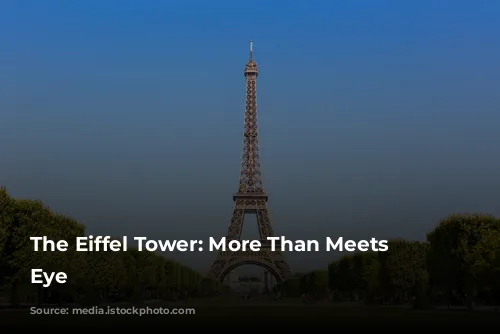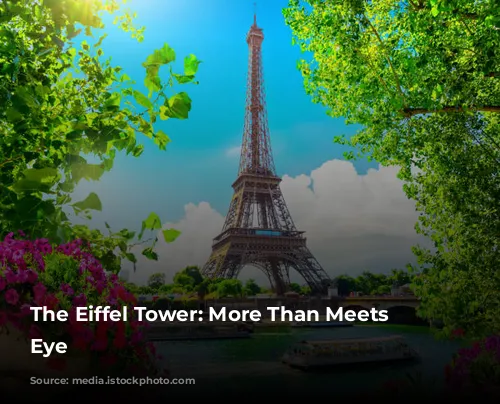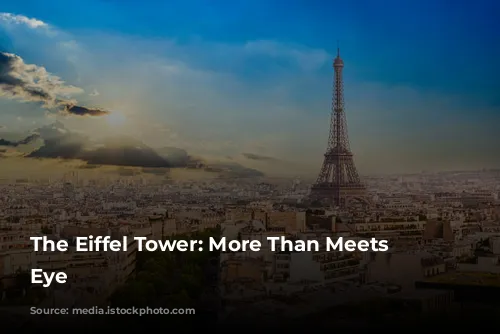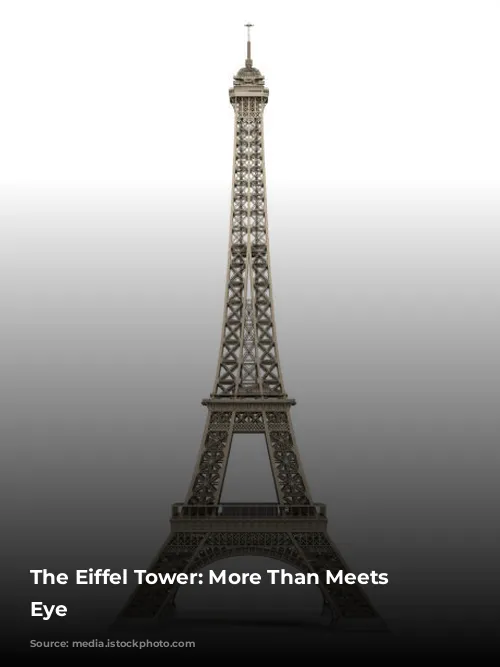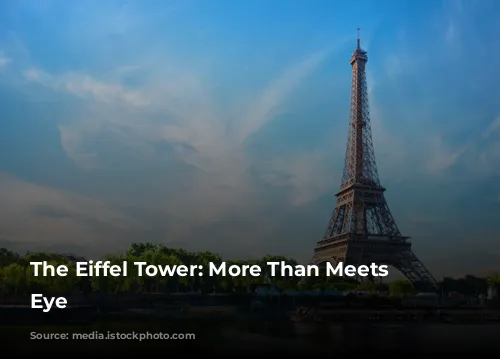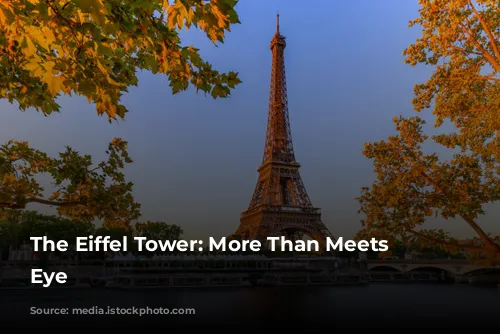The Eiffel Tower in Paris, France is a global icon, recognized across the world for its intricate design and towering stature. Completed in March 1889, this magnificent structure, also known as the Iron Lady, attracts millions of visitors annually, eager to soak in its grandeur. But beyond its iconic status, the Eiffel Tower harbors fascinating secrets, revealing a rich and intriguing history.

A Sky-High Home
Imagine living in the very monument you designed. Gustave Eiffel, the brilliant architect behind the Eiffel Tower, did just that. He crafted a lavish apartment nestled at the top of the structure, boasting plush carpets, elegant oil paintings, and even a grand piano! This exclusive sanctuary was reserved for a select few, including the renowned inventor Thomas Edison. Hidden from the world for decades after Eiffel’s passing, this 950-foot-high haven was finally opened to the public in 2015, allowing visitors to glimpse into the life of the Eiffel Tower’s creator.
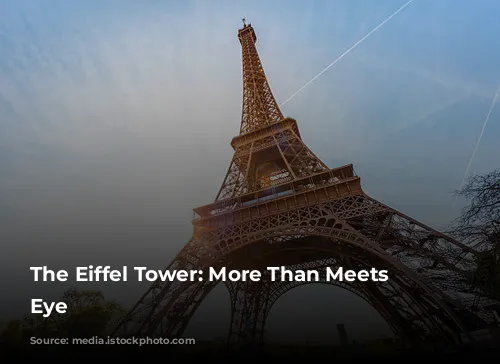
A Haven for Science
It’s no surprise that the peak of the Eiffel Tower, offering unparalleled views of the Parisian skyline, would entice scientists. Eiffel, a visionary and a keen observer, established two laboratories on the third level, dedicating them to the study of astronomy and meteorology. He conducted his own experiments, dropping objects from the tower’s second level to analyze their descent, revealing the intricacies of air resistance.
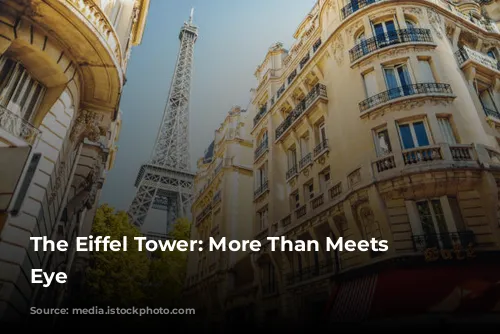
An Eco-Conscious Icon
Today, the Eiffel Tower embodies not only architectural brilliance but also environmental consciousness. In 2015, the Iron Lady underwent a sustainable transformation, incorporating two wind turbines on the second level. These wind-powered devices generate electricity for the tower’s bustling shops and restaurants, showcasing a commitment to renewable energy. The tower also boasts a rainwater collection system, diverting rainfall to flush its toilets, demonstrating a thoughtful approach to water conservation.
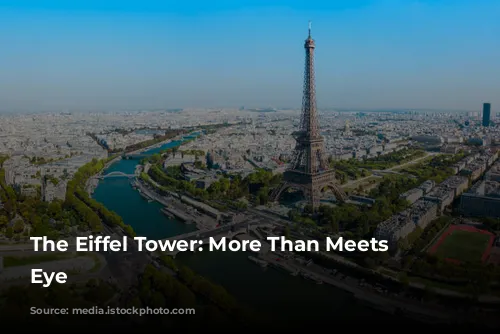
A Birthplace of Innovation
The Eiffel Tower’s debut was a landmark moment in global innovation. It was inaugurated at the 1889 World’s Fair, a global showcase of revolutionary inventions, architectural marvels, and artistic expressions. These fairs, held every three years in different cities around the world, have unveiled countless groundbreaking innovations, including the Ferris wheel, television, x-ray machines, and even the beloved ice cream cone. The Eiffel Tower, a testament to human ingenuity, stood tall amidst these groundbreaking achievements.
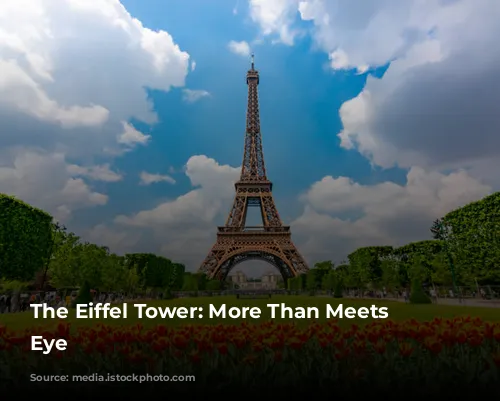
A Secret Agent’s Haven
The Eiffel Tower’s role extended beyond a tourist attraction during World War I, becoming a vital hub for communication and espionage. The French military utilized the tower’s sophisticated radio and telegraph systems to relay crucial messages to ground troops and warships, intercepting enemy communications as well. In 1916, the tower intercepted a message about a notorious female spy, Mata Hari, providing critical intel that led to her capture.
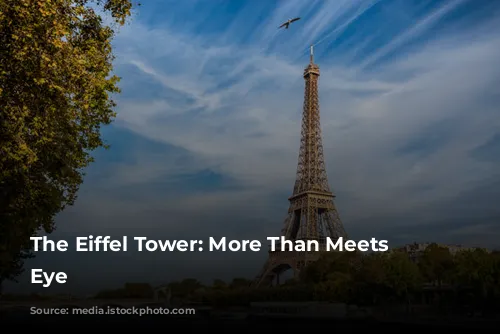
A Stage for Daredevils
For some, the Eiffel Tower inspires a yearning for daring feats. In 1889, a bold individual ascended the 704 steps of the tower… on stilts! In 1952, three trapeze artists defied gravity, performing breathtaking stunts 400 feet above the ground, dangling from ropes without the safety of a net. In 2010, a thrill-seeker roller-skated down a 90-foot-tall ramp, set up beneath the tower’s first level, proving that the Eiffel Tower is a canvas for extraordinary acts of courage.

A Colorful History
The Eiffel Tower’s exterior reflects its ever-evolving personality. Initially painted a deep red, it was later adorned with a bright yellow hue in 1899. Approximately 50 years ago, a bronze-colored paint was applied, adding another layer to its visual story. Today, the tower undergoes a paint job every few years, requiring a staggering 16,000 gallons of paint to maintain its iconic appearance.
The Eiffel Tower, a symbol of Paris and a global icon, continues to captivate the world with its undeniable charm and hidden stories. From its lofty perch to its intricate history, the Eiffel Tower stands as a timeless monument to human creativity, innovation, and an unwavering spirit of adventure.
